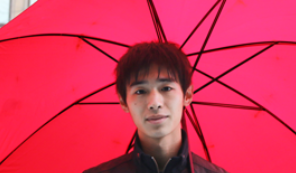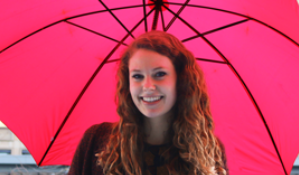Sprint 2 & 3: Summarization
“Due to very busy sprints the last couple of weeks, it has been a long time since we last updated our blog. We will therefore highlight some of our important steps of the project in a summary.
Sprint 2
Our sprint goal was:
“We are going to do more field research to see if our assumptions match the reality and based on this we are going to choose a user and create a concept to relieve their frictions while still keeping the sprint 1 concept in mind.”
To reach our sprint goal we had a tour at the security area at Schiphol Airport with the floor manager of the security area from Schiphol. This tour helped us getting a clear view of this area and how the process works.
We conducted field research by creating a cultural probe. A cultural probe provides way of gathering information about people and their activities. To really get to know our user we made an ‘Emotional Journey’ of the passengers in the security waiting area. We asked the passengers to draw a circle around the strength of the emotion they felt when they were at a specific touch point.
After getting feedback from the translate session, we decided to take more time to look into our insights in order to get more quality data, so we would understand the problem and the user’s pains better.
Therefore we changed our first sprint goal and focused more on choosing a target user.
At the end of sprint 2 we decided to focus on the leisure traveller and made a user profile based on field research, observation and gathered information.
Sprint3
Our goal for sprint 3 was:
“We want to conduct more in-depth research through creating one concept that relieves one friction for the leisure traveller by building an intervention that we can test in the field.”
On the 5th and the 7th of April we interviewed passengers in the waiting area. We held two interviews to gather information about meaningful time and about the provided information in the waiting area.
In these two interviews we received interesting information which showed us what those passengers found most important and valuable. Later in the sprint we turned the gathered information into useful insights.
Through our observations and interviews we gained some knowledge about the pain points and frictions of a couple of passengers and thereafter chose one friction that we wanted to work further with and brainstorm upon.
For the brainstorm session every member of the team brainstormed individually to come up with three concepts that they later would pitch for the rest of the team.
Based on the pitches of the team members and feedback from our stakeholders we decided to focus on one concept.
We turned the concept into a low-fi prototype and did a small test in the actual security waiting area.”







